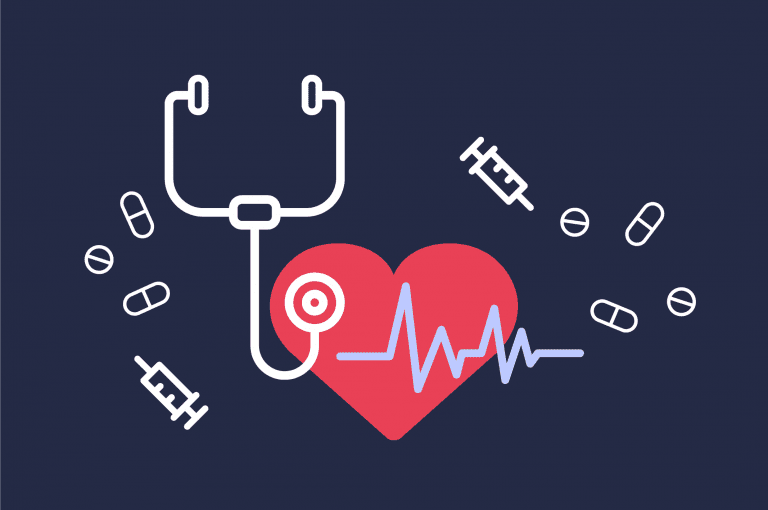Problems in the US Healthcare System: Challenges and Paths Forward

Problems in the US Healthcare System: Challenges and Paths Forward The United States has long been recognized as a world leader in medical research, technology, and innovation. Breakthroughs in diagnostics, therapies, and surgical techniques have transformed patient care worldwide. Yet, despite these advances, the US healthcare system faces persistent challenges that undermine equity, affordability, and trust. Millions of Americans still struggle with inadequate health insurance coverage, high medical costs, health literacy gaps, and disparities in care quality.
Problems in the US Healthcare System
Problems in the US Healthcare System This article explores the most pressing problems with the US healthcare system, supported by recent surveys and data, while outlining potential solutions that could make healthcare more accessible, affordable, and effective for all.
1. No or Inadequate Health Insurance Coverage
One of the most widely recognized US healthcare challenges is the lack of comprehensive insurance coverage. Nearly 30 million Americans remain uninsured, and millions more are underinsured, meaning their plans fail to cover essential needs or impose unaffordable out-of-pocket costs.
A recent Commonwealth Fund survey revealed:
-
43% of working-age adults were inadequately insured in 2022.
-
9% were uninsured altogether.
-
11% experienced gaps in coverage during the year.
-
23% were insured but underinsured, facing costs that prevented them from accessing needed care.
This crisis in healthcare access in the US forces uninsured patients to rely on emergency rooms, charities, and public funding. Ultimately, the costs are shifted onto taxpayers, hospitals, and insured patients. The long-debated solution is universal health coverage in America, but political and structural barriers make implementation complex.
2. Low Health Literacy in the US Population
Another critical issue is health literacy in America. According to the Milken Institute, 88% of adults lack the proficiency needed to navigate the healthcare system and make informed choices. Only 12% of Americans are considered proficiently health literate.
Consequences include:
-
Misunderstanding prescriptions and treatment plans.
-
Falling prey to misinformation.
-
Avoiding preventive care.
-
Resistance to vaccines, as seen during the COVID-19 pandemic.
The solution lies in strengthening science and health education in schools, integrating practical health literacy into curricula, and expanding public health campaigns. Without informed patients, even the best medical innovations cannot achieve their full impact.
3. Prevention and Management of Chronic Diseases
The US continues to grapple with chronic diseases such as diabetes, obesity, cardiovascular disease, HIV/AIDS, and cancer. These illnesses account for a significant share of premature mortality and disability, burdening both families and the healthcare system.
Key concerns include:
-
Chronic illnesses disproportionately affect minority and low-income communities, contributing to racial disparities in healthcare.
-
Preventive care measures—like regular screenings, healthy diets, and exercise—remain underutilized.
-
The number of primary care physicians is insufficient to manage long-term preventive care across the population.
Solutions must include:
-
Incentivizing more doctors to enter primary care.
-
Expanding community-based health centers.
-
Providing universal access to preventive services through healthcare insurance reform.
4. Giant Disparities in Quality of Healthcare and Outcomes
In the United States, life expectancy can vary dramatically by zip code. Factors such as poverty, unsafe housing, environmental hazards, violence, and poor education all affect health outcomes.
This reality reveals enormous health disparities in the US:
-
Wealthier urban and suburban areas enjoy access to advanced facilities and specialists.
-
Rural and underserved urban areas struggle with shortages of doctors, nurses, and hospitals.
-
Structural inequities perpetuate cycles of poor health in vulnerable communities.
Improving outcomes requires not only expanding healthcare access in the US but also addressing the social determinants of health: poverty, housing, education, and safety. Without holistic solutions, new hospitals alone will not close the gap.
5. Declining Trust in Doctors and the Healthcare System
Trust is a cornerstone of effective medical care. Yet patient trust in healthcare has been steadily declining for decades.
-
In 1966, 75% of Americans reported high confidence in medical professionals.
-
By 2012, that figure fell to 34%.
-
By 2019, only 15% of Americans expressed strong trust in the healthcare system.
This erosion of trust reflects frustrations with:
-
Impersonal, bureaucratic healthcare experiences.
-
Limited time with physicians.
-
Rising costs without corresponding improvements in care quality.
To rebuild trust, reforms must prioritize doctor-patient relationships, increase transparency in billing, and improve access to primary care providers.
6. The Crushing Cost of Healthcare
Perhaps the most visible problem with US healthcare is cost. The US spends more per capita on healthcare than any other nation, yet millions report financial strain.
According to a 2025 KFF Health Tracking Poll:
-
44% of US adults struggle to afford healthcare costs.
-
1 in 4 households reported difficulty paying medical bills in the past year.
-
41% of adults carry medical or dental debt.
-
36% of adults skipped or postponed needed care due to cost.
-
21% did not fill prescriptions because they were too expensive.
-
23% substituted over-the-counter drugs for prescribed medications.
These statistics show that even insured patients face barriers, with many rating their plans as “fair” or “poor” due to high premiums, deductibles, and co-pays.
7. Prescription Drug Costs
Prescription drug costs remain a specific pain point in the US healthcare system. Compared to other high-income countries, Americans pay significantly more for the same medications.
As a result:
-
Some patients cut pills in half to extend supply.
-
Others skip doses, putting their health at risk.
-
One in three adults used at least one cost-saving strategy last year.
Expanding generic drug access, regulating pharmaceutical pricing, and negotiating lower costs under Medicare are vital steps toward relief.
8. Medical Debt in America
Medical debt affects nearly half of American households. In 2022, 41% of adults reported debt related to healthcare costs. Debt was particularly common among Black and Hispanic adults, low-income families, and uninsured individuals.
Medical debt leads to:
-
Damaged credit scores.
-
Delayed access to care.
-
Long-term financial instability.
This debt crisis highlights the urgent need for affordable insurance coverage and protections against predatory billing practices.
Addressing the Future of US Healthcare
The problems with the US healthcare system are deep and complex: inadequate insurance, high healthcare costs, low health literacy, chronic disease burden, stark health disparities, declining trust in doctors, and crushing medical debt.
Solutions exist, but they require political will, systemic reform, and investment in both healthcare delivery and social infrastructure. Expanding universal health coverage in America, strengthening primary care, addressing racial disparities in healthcare, and prioritizing patient-centered care are crucial steps forward.
The US has the resources and innovation to lead the world not only in medical breakthroughs but also in equitable, accessible, and affordable care. The question remains: will we choose to act?




